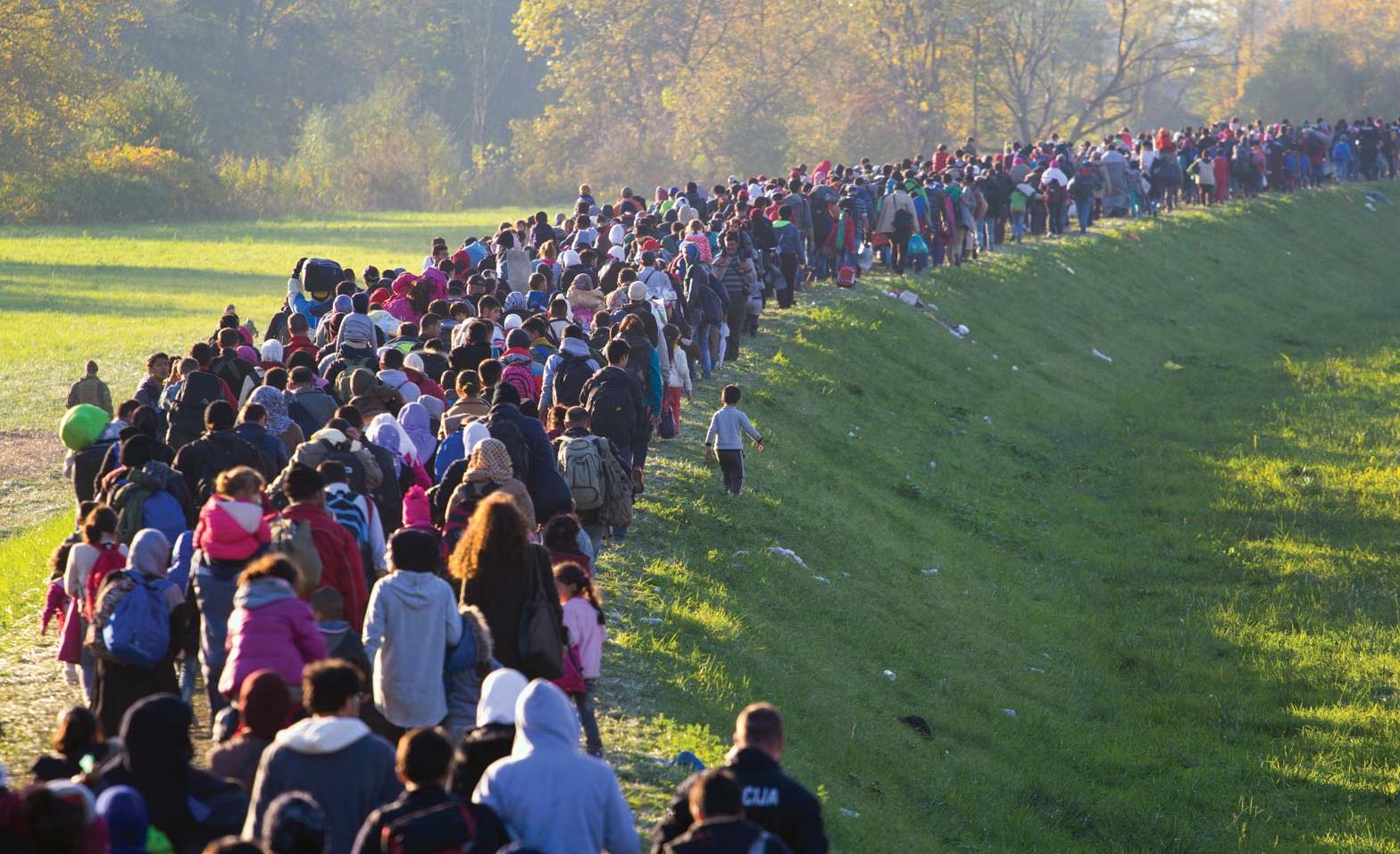Some of the crises we are exploring are natural. Others are human-made, and in some cases, such as climate change, it’s a combination of the two. Here’s another one: mass migration. For any of many reasons, people have to move from their homes. When huge areas are hostile to life, it causes mass migration. Let’s look at the causes and extent of the problem.
Already, a quarter-billion people have had to leave their homes.
There are currently about 258 million international migrants. That figure has grown massively since the turn of the millennium, when there were 173 million. This increase coincides with changing demograhics, advancing technology, evolving needs of labour markets and continued challenges posted by wars, shortages, human rights violations and climate change. . .
In Africa over 30% of countries have experienced lethal wars. . . The war in Syria has bought about the largest refugee and displacement crisis of out time. . .more than 6 million are internally displaced within Syria, and around 5 million are refugees outside Syria. . .
Global warming. . .displacing people from tropical and coastal islands. . . World water resources are under threat from fast growing populations, increasing consumption and pollution. . . Population growth has resulted in food-insecurity. . . Slashing and burning of forests. . .leads to mass migration of people. . .
The reasons for mass migration are not going away and if anything will worsen. Therefore migration will probably increase.
The Brookings Institute says climate change will be the greatest of many causes of migration.
• Large-scale human migration due to resource scarcity, increased frequency of extreme weather events, and other factors, particularly in the developing countries in the earth’s low latitudinal band
• Intensifying intra- and inter-state competition for food, water, and other resources, particularly in the Middle East and North Africa
• Increased frequency and severity of disease outbreaks. . .
All of these challenges are serious, but the scope and scale of human migration due to climate change will test the limits of national and global governance as well as international cooperation. . . In 2018, the World Bank estimated that three regions (Latin America, sub-Saharan Africa, and Southeast Asia) will generate 143 million more climate migrants by 2050. . .
The sea level is rising at a rate of 12 millimeters per year in the western Pacific and has already submerged eight islands. Two more are on the brink of disappearing, prompting a wave of migration to larger countries. . .
In South Asia, increasing temperatures, sea level rise, more frequent cyclones, flooding of river systems fed by melting glaciers, and other extreme weather events are exacerbating current internal and international migration patterns.
Most people migrate because they have to, but some make the choice, themselves.
• Push factors are the reasons that make someone decide to move. This
is their own experienceof life in one place which gives them good reasons to leave it.
Often push factors are negative things such as unemployment, crop failure, droughts, flooding, war, poor education opportunities or poor services and amenities.
• Pull factors, on the other hand, are the expectations which attract people to the new place. They are usually positive things, such as job opportunities, a better standard of living, better education, or better health care.
Reasons for migration change with time. Migration Policy offers several causes over the past year, including the following:
1. As the Venezuelan Crisis Digs In, International Community Pledges to Step Up
2. Syria and Iraq Experience New Waves of Displacement
3. Using Aid and Trade Threats as Leverage, United States Pushes Through Controversial Migration Management Deals
4. Violence against Immigrant and Minority Communities Erupts Amid Rising Xenophobic, Anti-Migrant Discourse
5. Insecurity Drives Displacement in the Sahel
Meanwhile, ConcernUSA lists ten places causing emigration.
1.Syria, 2. Afghanistan, 3. South Sudan, 4. Myanmar, 5. Somalia, 6. Sudan, 7. Congo, 8. Central African Republic, 9. Eritrea, 10. Burundi.
The George W. Bush Presidential Center says the current paranoia and xenophobia in the United States is short-sighted and counterproductive. It points to many current myths about immigration.
Immigrants played a leading role in building what has become the most prosperous nation in the history of the world. However, legal immigrants are many times misrepresented or their role in the U.S. economy is misunderstood.
• MYTH: IMMIGRANTS ARE TAKING OVER
FACT: Immigrants actually only account for 13.5% of the total U.S. population, which is in line with historical norms
• MYTH: IMMIGRANTS ARE ALL MEXICAN
FACT: 30% of immigrants come from Asia, and currently more are coming from China than Mexico
• MYTH: IMMIGRANTS DON’T WORK
FACT: 72.5% of immigrants believe hard work is how you succeed in America and are responsible for half of the total U.S. labor force growth over the last decade
• MYTH: IMMIGRANTS DON’T HELP THE ECONOMY
FACT: Immigrant-owned businesses with employees have an average of 11 employees
• MYTH: IMMIGRANTS TAKE AMERICAN JOBS
FACT: 7.6% of immigrants were self-employed compared to 5.6% of native-born Americans and they founded more than 40% of Fortune 500 companies
• MYTH: IMMIGRANTS AREN’T EDUCATED
FACT: Recent immigrants are more likely to have college degrees than native-born Americans and are more likely to have advanced degrees
At the George W. Bush Institute, we believe immigration policy should be used as a tool for economic growth and prosperity.
There are many reasons why people migrate. There’s not much we can do about natural disasters, like hurricanes and earthquakes, but many of the world’s problems are caused by people, such as war. poverty, political repression, and crime. Those are things we could work on before the migration crisis gets worse.
Donate Now to Support Election Central
- Help defend independent journalism
- Directly support this website and our efforts
